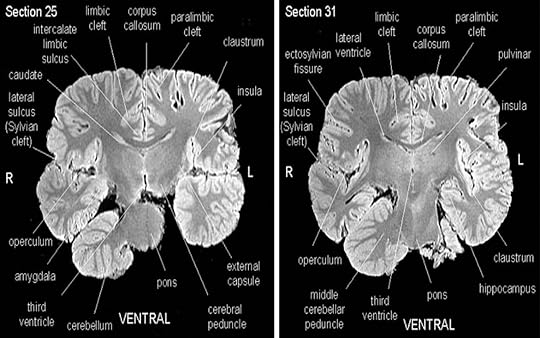Mark Caney's Blog, page 20
December 22, 2014
December 19, 2014
Reward for killer of dolphin shot by arrow now $20,000
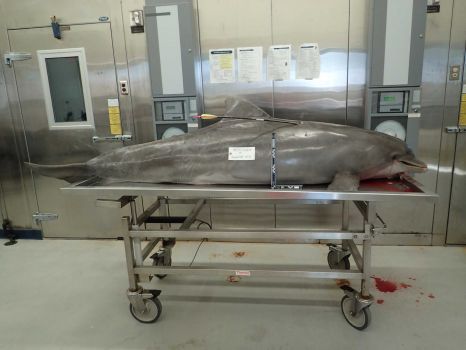 A reward for information leading to the arrest and prosecution of whoever shot an endangered bottlenose dolphin with a hunting arrow in the Gulf has been raised to $20,000.
A reward for information leading to the arrest and prosecution of whoever shot an endangered bottlenose dolphin with a hunting arrow in the Gulf has been raised to $20,000.
The dolphin is one of two that were found dead in the Northern Gulf of Mexico after being shot in the last month; it was found washed up on Orange Beach, Alabama, on December 7, with the arrow still sticking out of its side.
Right after Thanksgiving, another dolphin was found on Miramar beach, Florida; that one was pregnant and had been shot and killed with a small caliber gun.
The reward, initially $5,000, now stands at $20,000 after several agencies put their own money into the pot to try to encourage people to come forward with information.
The National Oceanic and Atmospheric Administration has been coordinating efforts to find the people responsible for the shooting. Both dolphins are thought to have survived for several days before their injuries killed them.
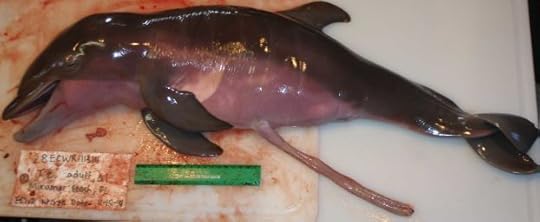 “This intelligent, social creature experienced tremendous suffering from this senseless act,” said Mindy Gilbert, Alabama state director for the Humane Society of the United States in a news release. “We are grateful for NOAA’s work to investigate this heinous crime and are hoping someone with information will come forward.”
“This intelligent, social creature experienced tremendous suffering from this senseless act,” said Mindy Gilbert, Alabama state director for the Humane Society of the United States in a news release. “We are grateful for NOAA’s work to investigate this heinous crime and are hoping someone with information will come forward.”
December 11, 2014
Still Think Humans are the Most Intelligent Animals? Here’s Why Whales and Dolphins Have us Beat
In the book The Dynamic Human, it is argued by a group of researchers from the University of Adelaide that humans aren’t the brightest crayons in the box. Co-author and research fellow, Dr. Arthur Saniotis, said “For millennia, all kinds of authorities — from religion to eminent scholars — have been repeating the same idea ad nauseam, that humans are exceptional by virtue that they are the smartest in the animal kingdom. However, science tells us that animals can have cognitive faculties that are superior to human beings.”
How can this be?! No other animal can think or communicate like a human, so clearly no other species can match our intelligence!
Well, while humans, as a species, are pretty smart, it’s impossible for us to claim the title of “most intelligent” species. After all, we still have many questions left to answer about our own brains, before we can truly compare them to that of another organism.
While primates are often used in studies on animal intelligence because of their similarities to humans, cetaceans are frequently used as research subjects as well. Looking at the brain of a cetacean, it is clear that perhaps dolphins and whales are much more complex than previously thought. Behind the glass of our “favorite” marine-themed amusement parks (we’re looking at you, SeaWorld) lives a complex organism who may have more to think and even say than we tend to believe.
Speech Production
The Broca’s and Wernicke’s areas of the cerebral cortex are located in separate lobes of the brain (frontal and temporal lobes, respectively), but they are connected by their function in speech production and language processing. Most people believe that a human’s ability to communicate is far more complex and evolved than that of other animals, but cetaceans may have us beat.
According to a comparison of cetacean to primate brains from Michigan State University, “They have the distinct advantage over us in that their primary sense is the same as their primary means of communication, both are auditory. With primates, the primary sense is visual and the primary means of communication is auditory.”
Communication is so great in cetaceans that there is a strong possibility they are able to project (yes … literally project) an “auditory image” that replicates a sonar message they may receive. The process is a bit confusing, but MSU describes it in this circumstance: “So a dolphin wishing to convey the image of a fish to another dolphin can literally send the image of a fish to the other animal. The equivalent of this in humans would be the ability to create instantaneous holographic pictures to convey images to other people.”
If they are in fact able to do this, there would have to be a natural tendency to break down stylized and abstracted images into words. Meaning, cetaceans, like people, use a series of signifiers to discern the exact objects they want to communicate about. We might say “tree” and think of a picture of a tree in our minds, but cetaceans can skip this step by simply projecting the image to other cetaceans.
Not fascinating enough? Well did you know that, with several sound producing organs, cetaceans are capable of conveying and receiving “20 times the amount of information as we can with our hearing”? This surpasses the amount of information we can perceive based on vision (a human’s primary sense).
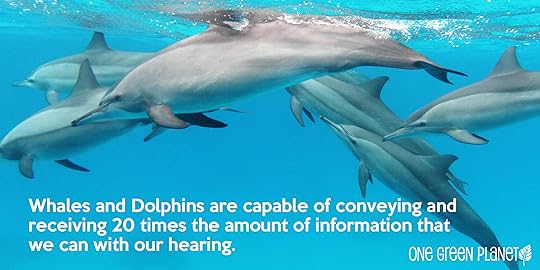
Emotions
Have you ever been so happy that you feel like you can conquer anything the world throws at ya? Well, you have the limbic system to thank for that. The limbic system is a combination of multiple structures in the brain that deal with emotions and the formation of memories. When it comes to comparing the limbic system of whales to that of humans, we may need to rethink our emotional awareness.
Lori Marino, a neurobiologist who helped co-write “The Declaration of Rights for Cetaceans,” finds the limbic system of whales to be the most intriguing part of their brains, as they may be more complex than our own. In her research of killer whales, she found that the limbic system of a whale is “so large it erupts into the cortex in the form of an extra paralimbic lobe.”
Since the lobe merges with the cortex, it is believed that the lobe may create a mixture of both emotional and cognitive thinking. The placement may also suggest that secrets about social communication and self-awareness may also be located in this part of the whale brain.
Advanced Cognition
Specialized brain cells called spindle neurons are most often associated with an organism’s ability to “recognize, remember, reason, communicate, perceive, adapt to change, problem solve and understand.”
Though this “advanced ability” is most often associated with organisms that are deemed to be the most intelligent, (*cough* humans *cough*) the truth is that spindle neurons have been isolated in the brains of both whales and dolphins, which suggests that whales do a lot more thinking than previously thought.
Dolphins, for example, have been known to recognize themselves in mirrors, solve problems, follow recipes, and associate a part of their anatomy with that of a human’s (such as when a dolphin waves it’s fin whenever a trainer waves their arm). even indicate that dolphins are capable of creating personalized whistles that act as names for individual members of a pod. With this name, dolphins are able to communicate more efficiently while roaming the open seas.
Read full story: OneGreenPlanet
December 10, 2014
Win a copy of Dolphin Way in free competition
Goodreads Book Giveaway

Dolphin Way
by Mark Caney
Giveaway ends January 01, 2015.
See the giveaway details
at Goodreads.
December 8, 2014
Roaming bottlenose dolphin Clet turns up off Mull
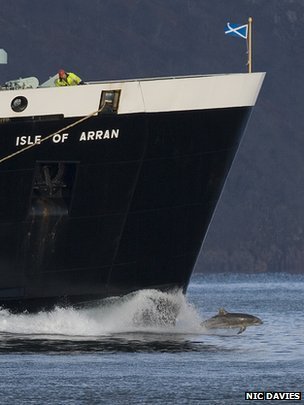 A solitary dolphin loved by fishermen in France but suspected of an “attack” on swimmers in the Republic of Ireland has turned up in Scottish waters.
A solitary dolphin loved by fishermen in France but suspected of an “attack” on swimmers in the Republic of Ireland has turned up in Scottish waters.
The male bottlenose dolphin was named Clet by locals from Cap Sizun in Brittany where it followed fishing boats between 2008 and 2010.
It has since been seen off Cornwall and in September was believed to have been aggressive towards swimmers in Galway.
Earlier this week Clet was spotted in the sea off Mull.
The dolphin, which is identified by distinctive scarring on its dorsal fin, was photographed by wildlife photographer Nic Davies close to shore from Craignure on Mull.
Dolphin experts have described Clet’s journey through European waters and his 372-mile (600km) swim from Galway to Mull as “remarkable”.
The incident in Ireland on 28 September saw five swimmers taken to shore by the RNLI.
Witnesses said the dolphin circled the swimmers then swam at them in an “intimidating way”.
The swimmers were not injured but were left frightened by the encounter.
The Hebridean Whale and Dolphin Trust has described some of the media coverage of the incident as “sensational”.
It said solitary dolphins do not pose a threat to people in boats, but could be aggressive towards swimmers.
HWDT added that Clet’s appearance off Mull on Tuesday was significant.
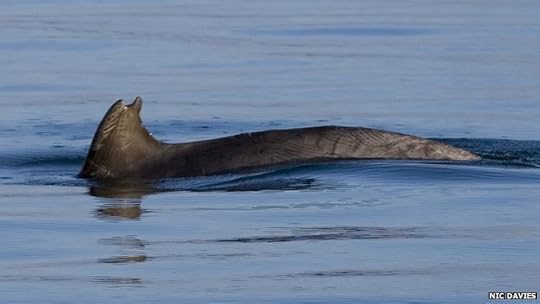 Clet has distinctive scarring
Clet has distinctive scarringDr Conor Ryan, the trust’s sightings officer, said: “To our knowledge, this is the first time that Clet has been recorded in Scotland, and in fact this is the furthest north he has been recorded to date.
“Bottlenose dolphins are usually considered to be resident to certain areas, so long-distance international movements such as this challenge our understanding of this species, and also challenge our ability to protect them using Marine Protected Areas alone.”
Photographer Mr Davies said: “I was out photographing otters when I heard a loud blow sound just out from the shore, and then I spotted the dolphin heading at speed towards a departing ferry.”
Padraig Whooley, sightings officer for the Irish Whale and Dolphin Group, said: “We think it’s remarkable that Clet’s movements can be tracked to the Irish south and west coasts from France via English and Welsh waters, using images from the general public.
“The addition of Scotland after a two-month interval brings his known tally of passport stamps to five countries and counting, and shows the need for international collaboration when trying to monitor these highly mobile marine mammals.”
Margaux Dodds, director and co-founder of the charity Marine Connection and co-author of a report on solitary dolphins, identified Clet when he first turned up off England’s south coast.
She said that the animal’s activity in Galway had been “misconstrued” and its behaviour was a form of defence and not an attack.
Bottlenose dolphins
Scotland is best known location for bottlenose dolphins is the Moray Firth on the east coast.
The firth and North Sea provide habitat for the world’s most northerly resident population of bottlenose dolphins.
The species is protected by European Union rules.
The Moray Firth’s population was declared as being “stable”, according to a report published by Scottish Natural Heritage last month.
An estimated 102 individual dolphins used a Special Area of Conservation (SAC) in the firth during the summer of 2011, 112 in 2012 and 94 in 2013.
Source: BBC
December 3, 2014
Rare albino dolphin won’t be slaughtered after being captured by Japanese fishermen – but will be sold into captivity
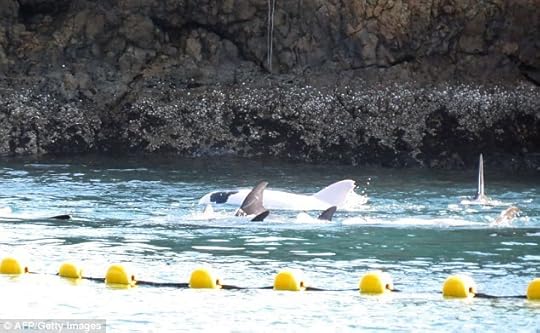 A rare albino dolphin has been captured by Japanese fishermen and could be sold for up to £300,000 to be displayed in captivity.
A rare albino dolphin has been captured by Japanese fishermen and could be sold for up to £300,000 to be displayed in captivity.
The fishermen killed 11 other dolphins in a shallow cove in Taiji, Wakayama, central Japan, according to members of the Sea Shepherd conservationist group.
They then transferred the albino into a small holding pen where it is being trained to eat dead fish and adapt to human interaction.
Campaigners are trying to stop the controversial annual hunt of the dolphins in the town, as well as the sale of the mammals to aquariums.
‘It is horribly sad to see another albino dolphin taken by the killers here in Taiji,’ said Karen Hagen, a leader of campaign group ‘Cove Guardians’.
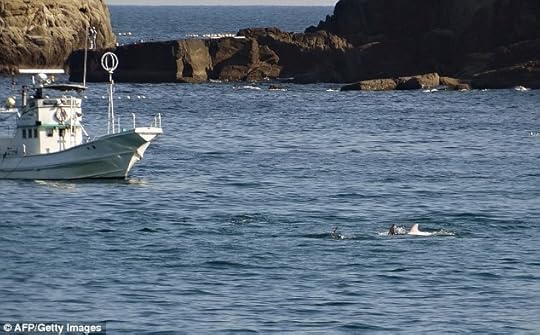 It was the subject of Oscar-winning documentary The Cove which thrust the small town into the global spotlight in 2010.
It was the subject of Oscar-winning documentary The Cove which thrust the small town into the global spotlight in 2010.
‘This brutal hunt is carnage carried out in the name of profit, not culture,’ said Melissa Sehgal, a Sea Shepherd campaign coordinator.
‘These dolphins do not belong to Japan; they belong to the ocean.’
The group says that 15 pods of dolphins have been slaughtered in the cove since this year’s hunting season began, with more than 170 dolphins killed.
Over four days in mid-January, Taiji fishermen selected 52 dolphins for sale into captivity, slaughtered 41 for meat, and then drove the surviving pod members back out to sea, according to Sea Shepherd.
Despite the use of tarps and other screening strategies, Sea Shepherd and some news organisations obtained photographs and video of the hunt, which helped fuel global response.
Local people defend the hunt which is a long-held tradition, saying it is no different from slaughtering any other animal for meat.
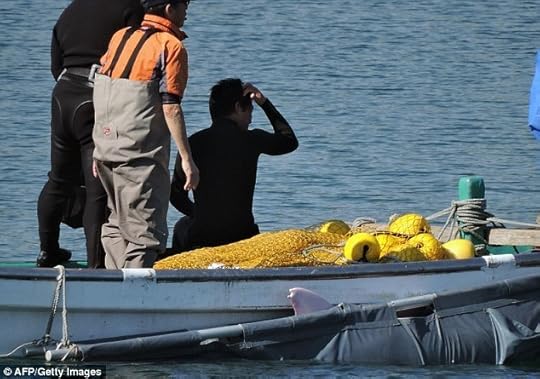
Full story: Mail Online
November 27, 2014
Puppy Befriends Pod Of Playful Dolphins
A very lucky dog had a very enviable experience recently while out enjoying a day at Whangaumu Bay in northern New Zealand. While the playful 10-month-old pup, named Jackie, sloshed around in the waves, she was met by a group of sea-faring locals — a friendly pod of wild dolphins — who seemed quite interested in making her acquaintance.
According to Jackie’s owner, Arriane Christie, the incredibly amicable interaction lasted more than 30 minutes, a few of which she was able to capture on film.
“I think they were just wanting to play. Jackie was in the shallows and they came right up to her,” Christie told local news website Stuff.
Jackie is hardly the first dog to have found a friend in dolphins. In fact, there have been a number of similar encounters recorded on camera before.
But perhaps the most memorable, and long-lasting, of these interspecies friendships is one made famous in a clip from the BBC show “Countryfile,” in which a dog named Ben becomes best buds with a dolphin named Dougie in a harbor in Ireland.
Source: The Dodo

November 25, 2014
Rare albino dolphin captured in Japan’s ‘Cove’
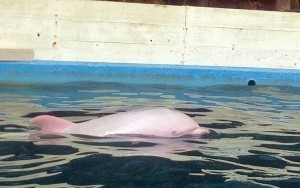 Another rare albino dolphin previously caught in Taiji
Another rare albino dolphin previously caught in TaijiA rare albino dolphin has been captured by Japanese fishermen, according to a campaign group staging a protest against the sale or slaughter of the creatures.
The albino Risso’s dolphin was driven into a cove over the weekend by fishermen at Taiji in Wakayama Prefecture, central Japan, said Sea Shepherd, which has teams of observers in the remote town.
Campaigners are trying to halt the annual slaughter of the dolphins in the town, as well as the sale of some to aquariums.
They complain that locals claiming to be upholding ancient traditions of killing and eating dolphins are actually more interested in the often-valuable sale of live specimens.
The latest catch was made on Sunday, Sea Shepherd said, adding that another albino was caught in Taiji some 10 months ago.
“It is horribly sad to see another albino dolphin taken by the killers here in Taiji,” said Karen Hagen, a leader of the campaign group’s “Cove Guardians” volunteers monitoring the hunting in Taiji.
“These rare, beautiful, and unique animals will spend the rest of their days confined to small tanks, where they will live out their shortened lives performing tricks for food,” she said in a statement.
The group said Taiji fishermen have so far killed about 170 Risso’s dolphins in the hunting season that stretches from September through late February.
The campaigners are streaming live footage of the secluded bay, into which local fishermen corral hundreds of dolphins for slaughter, a practice that thrust the small town into the global spotlight in 2010 when it became the subject of the Oscar-winning documentary “The Cove”.
Defenders say it is a tradition and point out that the animals it targets are not endangered, a position echoed by the Japanese government.
Source: Yahoo

November 14, 2014
New German language review of Dolphin Way
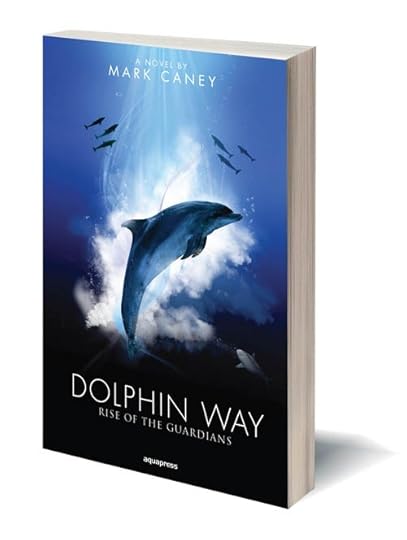 Ich muss zugeben ich war sehr skeptisch, als ich zum Ersten Mal von der Prämisse von Dolphin Way gehört habe. Ein Roman aus der Sicht von Delfinen mit eigener Gesellschaft, Geschichte und Kultur? Dennoch habe ich mir eine Leseprobe heruntergeladen und wurde von der Komplexität in den Bann gezogen und habe dann sofort das komplette Buch gekauft.
Ich muss zugeben ich war sehr skeptisch, als ich zum Ersten Mal von der Prämisse von Dolphin Way gehört habe. Ein Roman aus der Sicht von Delfinen mit eigener Gesellschaft, Geschichte und Kultur? Dennoch habe ich mir eine Leseprobe heruntergeladen und wurde von der Komplexität in den Bann gezogen und habe dann sofort das komplette Buch gekauft.
Mark Caney versteht es sehr gut eine komplexe detaillierte Gesellschaft zu beschreiben, in die der Leser hineingeworfen wird, ohne sich mit seitenlangen Erklärungen aufzuhalten. Leser die nicht mit Fantasyliteratur oder fremdartigen Begriffen vertraut sind, mögen am Anfang vielleicht etwas Probleme haben aber das geht schnell vorbei. Die Kapitel sind vergleichsweise kurz und werden von einem kurzen Spruch oder Text aus der Geschichte der Delfine eingeleitet, der in gewisser Form die Lehre oder den Inhalt des folgenden Kapitels unterstützt. Die Kürze der Kapitel erhöhen den Suchtfaktor des Buches, denn man ertappt sich dabei immer noch ein kleines Kapitel lesen zu wollen.
Zur Geschichte sei nicht viel verraten, außer das der Protagonist des Buches sich mit den gewaltigen Veränderungen auseinandersetzen muss, die auf den Delfine durch die Veränderung ihres Alltags und ihrer Umwelt lasten. Caney flechtet die Aktionen von Menschen, und die Probleme die dadurch für die Wesen im Meer entstehen, geschickt in die Handlung ein und zeigt dem Leser wie durch einen Spiegel die Absurdität unserer Taten auf. Dazu kommen die üblichen Lektionen die sich ein Heranwachsender im Leben stellen muss und die auch auf den Protagonisten lasten.
Die schwere Prämisse des Buches funktioniert, die Gesellschaft der Delfine, die Handlung und die Charaktere sind glaubwürdig und Mark Caney schafft den schwierigen Spagat dem Leser glaubhaft zu machen dass diese fiktive Geschichte tatsächlich in unserer Welt spielen könnte.
Das Buch ist sehr zu empfehlen, für Fans von Delfinen sowieso ein absoluter Pflichtkauf! Ich warte jedenfalls schon auf die Fortsetung!
Von Nicolai Duda

November 10, 2014
WDC welcomes new international commitment to end live capture of whales and dolphins
WDC is delighted by today’s news from the latest Convention on Migratory Species (CMS ) meeting that a resolution addressing the cruel capture of whales and dolphins from the wild (for commercial use in aquaria and theme parks) has been adopted.
CMS is a United Nations backed treaty that aims to protect wildlife and habitats around the globe, and WDC was instrumental in the development and adoption of this resolution by the 120 countries signed up to the Convention.
Sponsored by Monaco, the resolution requests countries now develop and implement national legislation that stops live capture of whales and dolphins from the wild and urges them to stop imports and international transit of live whales and dolphins for these cruel commercial purposes.
It also urges countries to encourage those who do still engage in live capture activities to stop, and to consider the welfare implications of the practice. The resolution calls for greater collaboration with other international bodies such as the Convention on International Trade in Endangered Species (CITES ) and the International Whaling Commission (IWC – the organization that regulates whale hunting) on this important issue affecting whale and dolphin conservation and welfare.
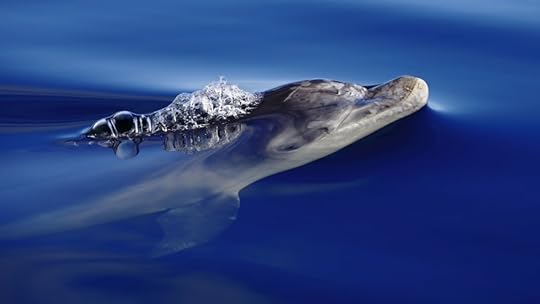 Bottlenose dolphin at surface WDC/Charlie Phillips
Bottlenose dolphin at surface WDC/Charlie PhillipsWild whale and dolphin populations targeted by live captures are typically small and vulnerable to other threats in their environment. Their population structures are often not fully understood and we often lack the data necessary to assess the sustainability of captures.
Captures of whales and dolphins from the wild continue in some parts of the world in spite of international concerns from experts about the sustainability of the captures and the impact on the health and welfare of the individuals taken, as well as their families left behind. This resolution addresses the continued threat posed to wild whale and dolphin populations through the removal of individuals for public display in commercial aquaria and travelling shows.
A number of countries signed up to CMS import wild-caught whales and dolphins for commercial aquaria and some also allow captures in their own waters. This new resolution requests that signatory countries develop legislation similar to that already in place in other signatory countries such as India, Chile, Costa Rica and the European Union.
Nicola Hodgins, WDC lead on CMS said: “as the first such UN backed international measure on the live captures of whales and dolphins, we welcome this commitment to address this important threat to whale and dolphin conservation”.
Cathy Williamson, WDC captivity programme lead added: “this very positive development from CMS sends a clear message of international concern about the impact of live captures for the aquarium industry on wild whale and dolphin populations. The very clear impact on whale and dolphin welfare and conservation now recognised by 120 countries around the world must signal an end to such captures and the captivity industry they fuel”.
Please support our work to protect whales and dolphins.
Source: WDC


